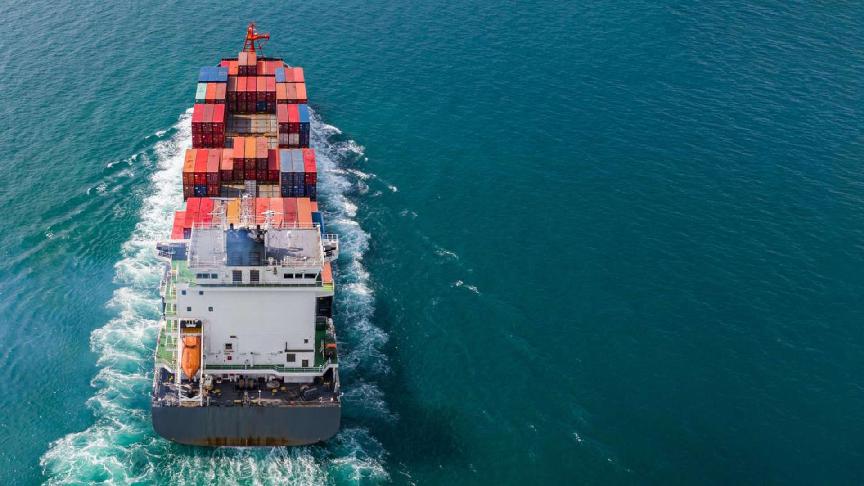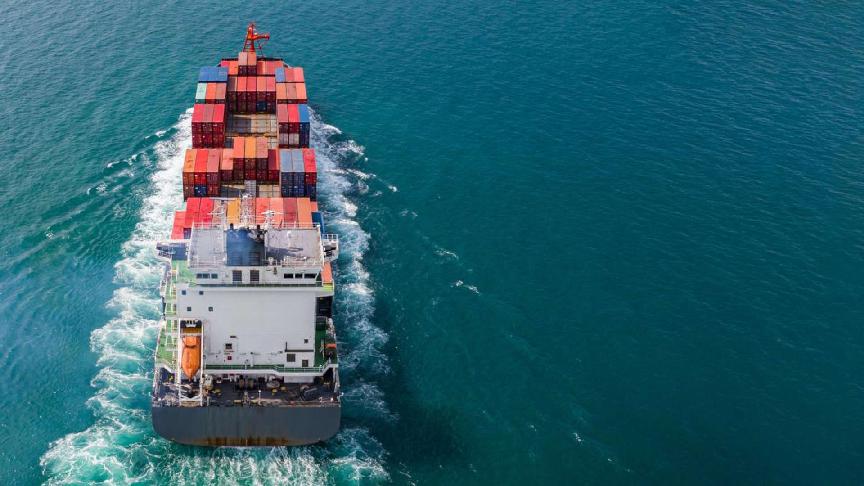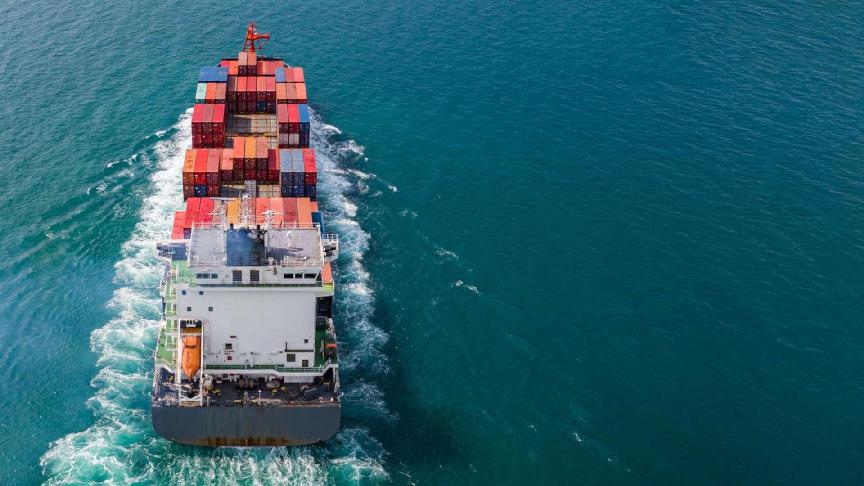Our bi-weekly carrier update brings you the latest news about the new and updated sea freight services our top carriers offer on main trade routes. It also covers relevant activities the carriers announced in the past two weeks.
New & updated services on main trade lanes
Asia <-> Indian Subcontinent
Danish carrier Maesrk is starting a new service on 20 September, connecting Asia, the Middle East and the Indian Subcontinent. The service, titled Safina, will deploy six vessels with an average vessel capacity of 5,100 TEU, as reported by Sea Intelligence. The port rotation of the service will be: Ningbo – Shanghai – Shekou – Tanjung Pelepas – Port Klang – Jebel Ali – Colombo – Singapore – Ningbo, and the first vessel on the service will be Sofia I.
In addition, Maersk is revising the port rotation of the FI3 service by removing the port calls at Kwangyang and Tanjung Pelepas, while adding port calls at Port Klang and Mundra. Maersk will also increase the number of deployed vessels to six. Following is the revised port rotation: Qingdao – Tianjin Xingang – Busan – Port Klang – Nhava Sheva – Pipavav – Port TBA* – Mundra – Colombo – Port Klang –Singapore – Qingdao.
Asia <-> North America
This month, MSC updated the port rotation of the Santana service by adding port calls at Vung Tau, Laem Chabang, New York and Norfolk. The carrier also removed port calls at Haiphong, Port Everglades and Baltimore. The updated port rotation is currently: Ningbo – Shanghai – Busan –Manzanillo(Panama) – Cristobal – Caucedo – New York – Laem Chabang – Vung Tau – Ningbo. The first vessel, MSC Vega, departed Laem Chabang Port on 23 August. MSC is deploying twelve vessels on the service, with an average vessel capacity of 10,700 TEU.
Another service update was introduced to MSC’s Shikra and Sentosa services. As of early September, the carrier will merge the two services under one name, Sentosa. The port rotation of the merged service will be as follows: Port Klang – Singapore – Laem Chabang – Cai Mep – Busan – Long Beach – Oakland – Busan – Qingdao – Shanghai – Ningbo – Shekou – Singapore – Colombo – Mundra – Nhava Sheva – Colombo – Port Klang. The first vessel to depart on 6 September from Port Klang will be the MSC Francesca, and the average vessel capacity deployed will be 11,700 TEU.
Furthermore, the port rotation of the Chinook service was changed on 26 August. The new port rotation is: Yantian – Shanghai – Qingdao – Busan – Vancouver – Seattle – Portland – Yantian. According to Sea Intelligence data, MSC is deploying six vessels deployed on the service, with an average vessel capacity of 6,800 TEU.
Asia <-> North Europe
MSC intends to update its Swan service starting in early September. The carrier will drop the port calls at Singapore, Qingdao, Busan, Tanjung Pelepas, Klaipeda, and Antwerp and add a port call at Felixstowe. Following is the updated port rotation: Ningbo – Yantian – Felixstowe – Gdansk – Gdynia – Bremerhaven – King Abdullah Port – Ningbo. The first vessel, MSC MIrella V, will depart from Ningbo on 6 September, and the average vessel capacity on the service will be 11,300 TEU.
Asia <-> Oceania
Container carriers ZIM and GSL are introducing multiple changes to their Asia-Oceania portfolio. The changes will take effect in September and October as follows:
- The CAX, TFX and N2A services, connecting Asia to Oceania and Australia to New Zealand, will be terminated in October.
- ZIM will join MSC’s Panda service as an operator in October under the name ZAX. The service has 15 port calls as follows: Nansha – Hong Kong – Yantian – Brisbane – Melbourne – Sydney – Brisbane – Busan – Qingdao – Shanghai – Ningbo – Nansha – Hong Kong – Yantian – Nansha, and deploys seven vessels with an average vessel capacity of 5,000 TEU.
- ZIM is also joining MSC’s Capricorn service in October under the name ZOX. The service’s port rotation is: Singapore – Jakarta – Fremantle – Adelaide* – Melbourne – Sydney* – Bluff* – Napier – Tauranga – Brisbane - Tanjung Pelepas – Singapore. However, ZIM will not include the port calls marked with an asterisk in its service.
- Lastly, ZIM will join another MSC service in October, named the New Kiwi. ZIM will brand the service ZAO, where seven vessels will be deployed with the following port rotation: Laem Chabang – Singapore – Tanjung Pelepas – Singapore – Jakarta - Brisbane – Sydney – Auckland – Lyttelton – Port Chalmers - Brisbane - Tanjung Pelepas – Singapore - Laem Chabang.
Indian Subcontinent <-> Middle East
Effective September 2023, Hapag-Lloyd and Unifeeder will revise the port rotation of the IG1 service. The service will add Nhava Sheva, Kandla and Ad Dammam to the port rotation and drop Sohar and Jubail. Three vessels will be deployed on the service, with an average vessel capacity of 3,700 TEU. Port rotation is: Jebel Ali – Karachi – Mundra – Kandla – Nhava Sheva – Jebel Ali – Ad Dammam – Shuaiba – Umm Qasr – Jebel Ali.

Mediterranean/Black Sea <-> North Europe
Starting 30 September, Hapag Lloyd is updating the port rotation of the AL7 service, where a port call at Alexandria Port will be added. The revised port rotation will be: Alexandria - Mersin - Ashdod - Haifa - Aliaga - Piraeus - Genoa - Barcelona - Valencia - Halifax - New York - Norfolk - Savannah - Valencia - Barcelona. The first vessel to call Alexandria will be the MV Melina.
Mediterranean/Black Sea <-> South America
Maersk and CMA CGM plan to update the port rotation of the Sirius and Bossa Nova service in October. The updated port rotation will add a call in Rio de Janeiro as follows: Tangier –Salvador –Rio de Janeiro–Santos –Itapoa –Paranagua –Santos –Itaguai –Tangier–Algeciras–Tangier.
North Europe <-> South America
Hapag Lloyd announced a rotation update for its CES service by adding a second port call at Antwerp. The new port rotation will be: Caucedo – Antwerp – London Gateway – Hamburg – Antwerp – Saint John – Norfolk – Kingston – Santa Marta – Puerto Moin – Caucedo, and the first vessel, Cape Corfu, is set to depart from Caucedo on 7 September.

More in carrier news…
Talks about Hapag-Lloyd’s interest in acquiring South Korea’s liner HMM was widely circulated in the news last week. The German carrier had submitted a bid for that purpose but was later excluded from the bidding process after Korean stakeholders expressed concerns over handing over a stake in HMM to a foreign bidder.
Two of the top container liners, ONE and Evergreen, swapped rankings this month when ONE increased its capacity to put it in sixth place on the Top-100 Carriers list, overstepping its Taiwanese counterpart. However, analysts claim this swap will be temporary as Evergreen’s sizeable orderbook is expected to see it jump in rank soon.
Additionally, the media reported on carriers’ growing interest in investing in technology-based solutions. Evergreen inaugurated the country’s first automated container terminal at Kaohsiung Port. A report by Container Management highlighted that Evergreen had set a goal to build a fully automated container centre at the port’s Terminal 7, where it installed 24 STS cranes, 60 unmanned A-RMGs and 24 smart gates.
MSC, among other entities, has invested in a German data technology company specialising in sustainability data. According to a Shipping Watch report, the aim of this investment is to launch an EU Emissions Trading System (ETS) tool that makes the carbon quota system more manageable for the industry.
In the meantime, MSC received a new 16,000 TEU vessel titled MSC Vivienne with advanced technology that “significantly diminishes NOx exhaust emissions, ensuring compliance with the Energy Efficiency Design Index (EEDI) and IMO Tier III emission regulations,” as reported by FleetMon.







